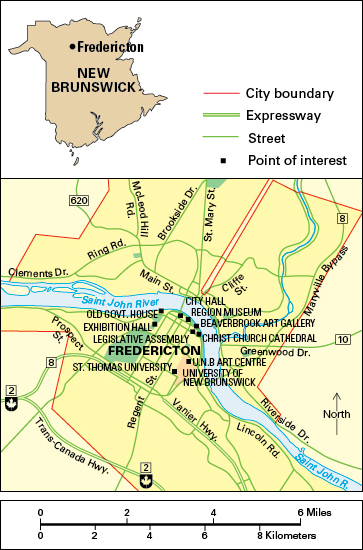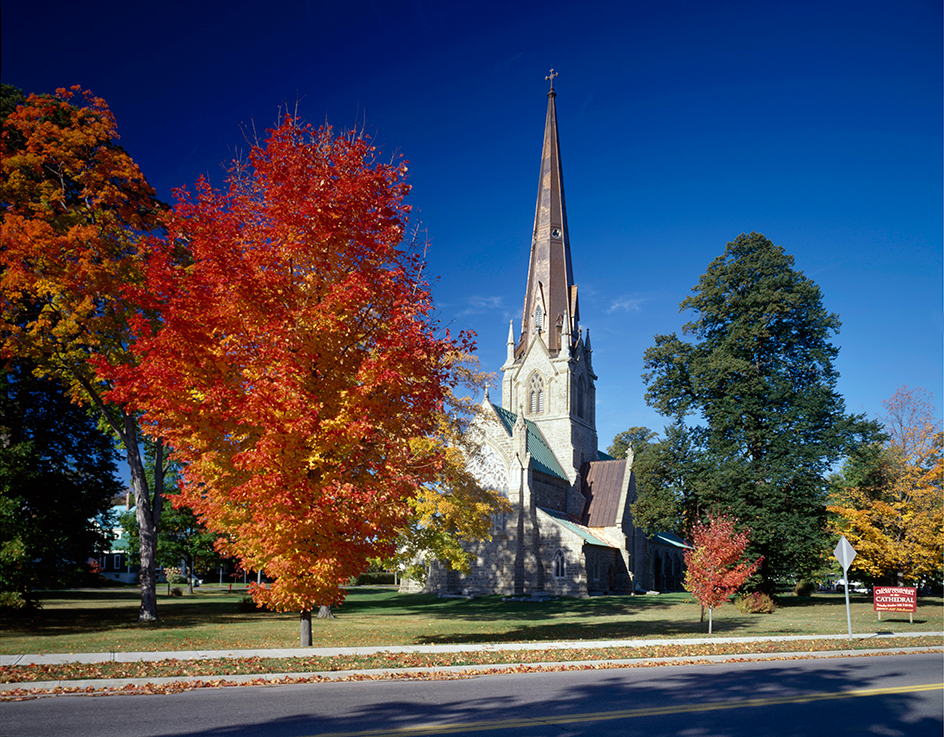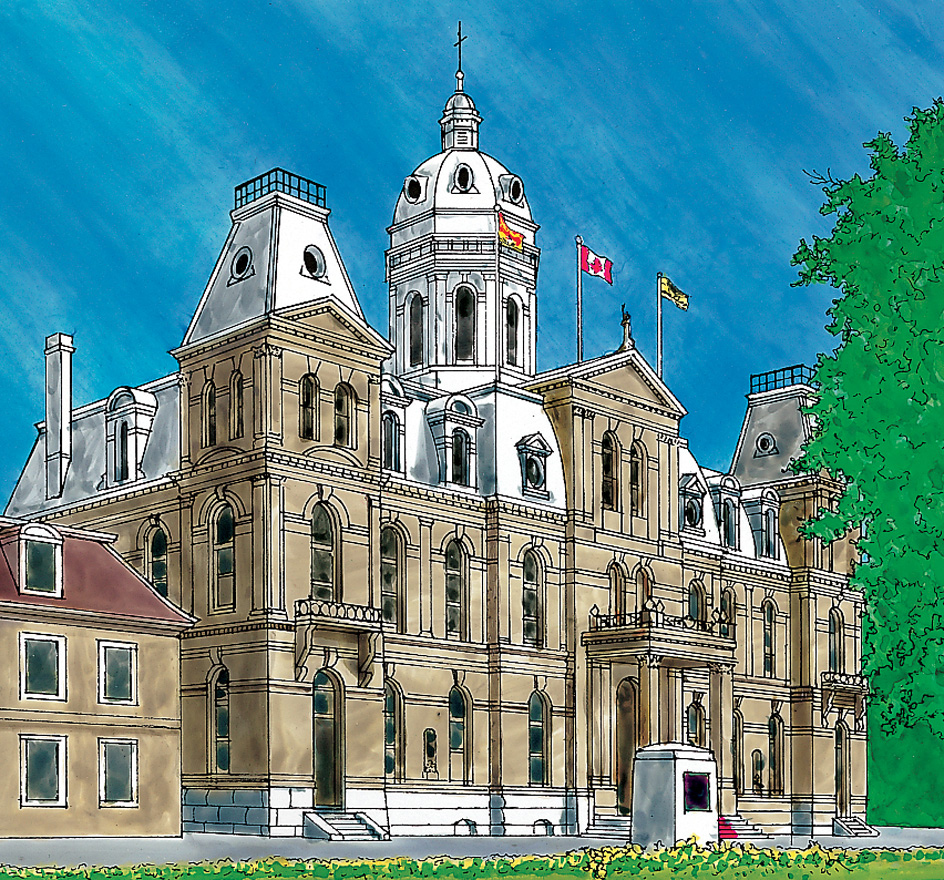Fredericton (pop. 63,116) is the capital of the Canadian province of New Brunswick. The city lies on the Saint John River, in the southwestern part of the province.

Fredericton’s industries include technology, research, education, defense, manufacturing, trade, and various services. The provincial and federal governments are Fredericton’s major employers. The city has many craftworkers. The workers’ products include jewelry, leather goods, pottery, and wooden toys. Fredericton is the home of the Beaverbrook Art Gallery and Christ Church Cathedral. The cathedral is one of North America’s finest examples of architecture in the Gothic style. In addition, the city is the home of the University of New Brunswick and St. Thomas University.

Maliseet (also called Wolastoqiyik) and Mi’kmaq First Nations lived in what is now the Fredericton area before Europeans arrived. The British founded Fredericton in 1762 on the site of an abandoned French settlement. They named the settlement in honor of Prince Frederick, the second son of King George III. After the Revolutionary War in America ended in 1783, about 6,000 people from the United States moved to Fredericton because they wanted to remain British subjects. The city became the capital of New Brunswick in 1785. The provincial legislative building was built in downtown Fredericton in 1880.

In 1974, several surrounding communities united with Fredericton, and the city’s population increased from 24,254 to about 44,000. An urban renewal project called Kings Place opened in Fredericton in 1974. The project includes business offices and a shopping center. Fredericton has a mayor-council form of government.
